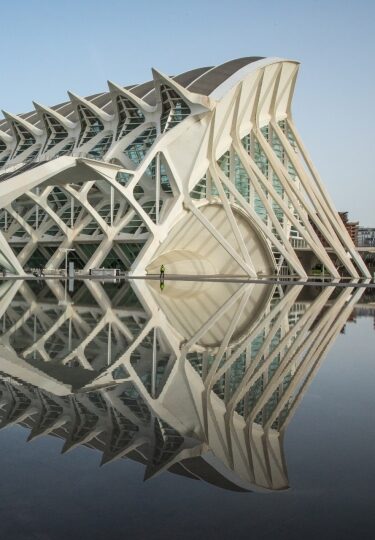You’ll find some of the world’s best museums in Spain. From cutting-edge architecture at the Guggenheim Museum Bilbao to spaces dedicated to artists Pablo Picasso, Salvador Dalí, and Joan Miró, Spain’s museums celebrate the country’s rich cultural heritage.
Museums typically offer helpful audio guides and expert talks. There are family activities and educational workshops, not to mention sophisticated cafés and restaurants and impressive gift shops filled with curated pieces.
Balance visiting gorgeous beaches and sampling delicious tapas with visiting these top 15 museums in Spain.
Guggenheim Museum Bilbao
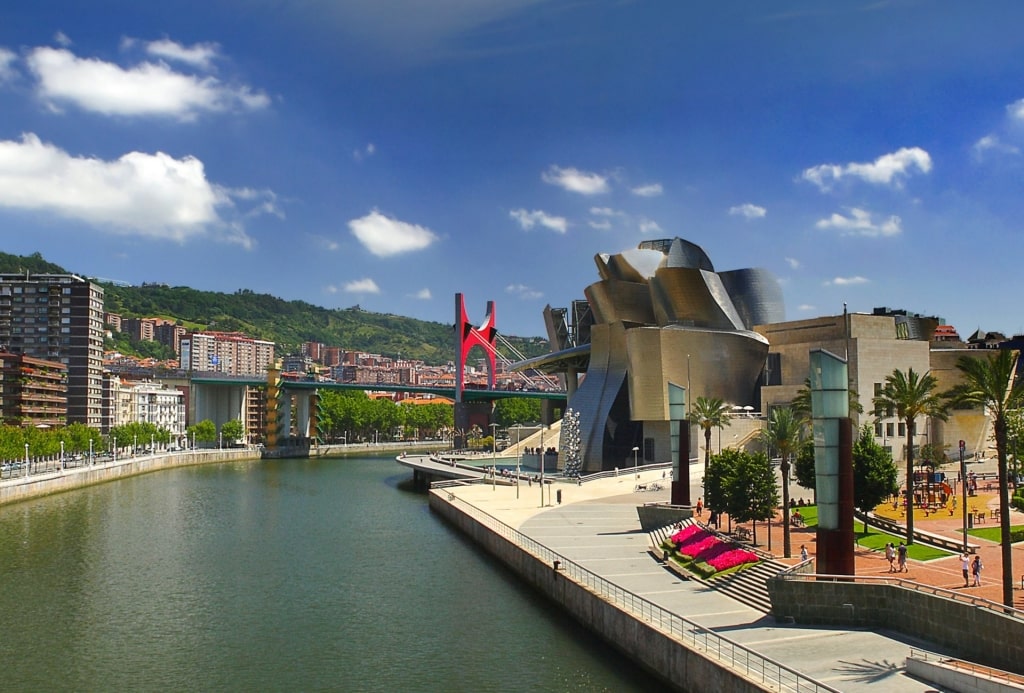
Guggenheim Museum Bilbao
Spain’s outpost of the Guggenheim Museum is situated next to the winding Estuary of Bilbao in the beating heart of the Basque Country.
A signature Frank Gehry design of tangled titanium, limestone, and glass, the sculptural form of the Guggenheim is one of Bilbao’s biggest talking points.
One of the most beautiful places in Spain, the gleaming museum showcases its own permanent collection of mostly Spanish 20th-century paintings, sculptures, and installations, plus a series of temporary exhibitions each year.
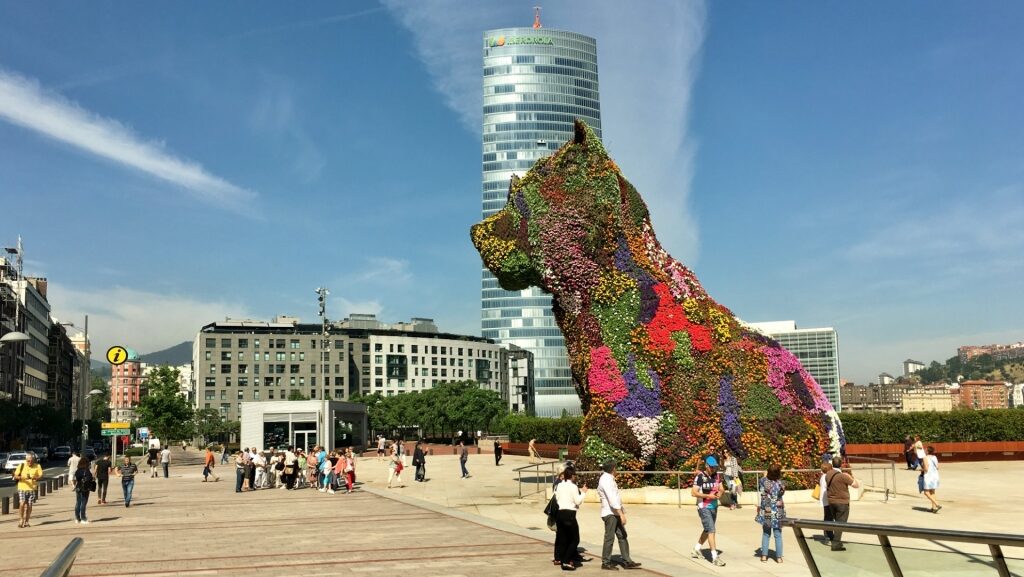
“Puppy” in Bilbao Photo by Eric Titcombe on Flickr, licensed under CC BY 2.0
Highlights include Jeff Koons’ “Puppy”, decked in flowering plants; Louise Bourgeois’ “Maman”, a 33-foot bronze spider that’s not for arachnophobes, and Jean-Michel Basquiat’s “Man From Naples” collage.
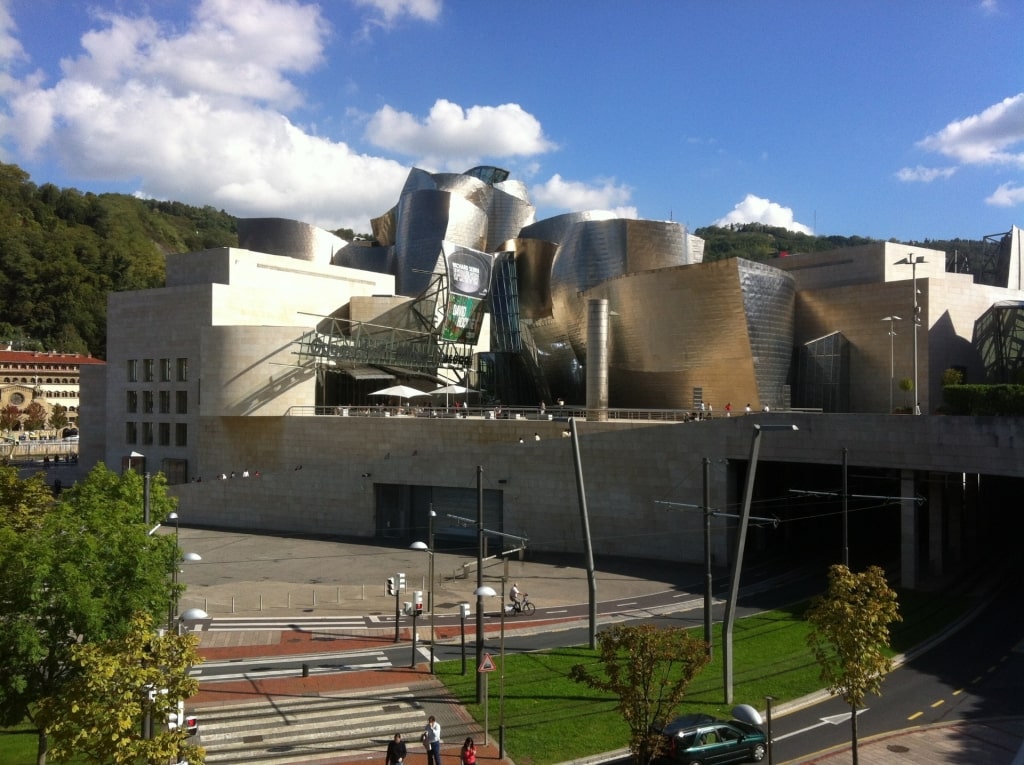
Guggenheim Museum Bilbao Photo by Andrew Nash on Flickr, licensed under CC BY-SA 2.0
Explore the extraordinary architecture of this Spanish landmark and join a tour or workshop. Afterward, enjoy lunch at one of the city’s best restaurants, Nerua Guggenheim Bilbao. Dishes are expertly crafted, with just three menu changes each year—spring, summer, and autumn-winter.
The cuisine at Nerua mirrors the modernity of the Guggenheim, with adventurous dishes such as veal sweetbreads with cauliflower toffee and sherry, and avocado in cream with fenugreek ice cream.
Read: Best Things to Do in Bilbao
Moco Museum, Barcelona
In stark contrast to the nearby 14th-century Basilica of Santa Maria del Mar, the Moco Museum is one of the newest landmarks in Barcelona, opened in October 2021.
The Moco Museum’s pristine walls are dressed with a thrilling collection of modern and contemporary art, split into two exhibitions.
The Moco Masters Modern exhibition features works by some of the world’s most famous contemporary artists, including Andy Warhol, Salvador Dalí, Keith Haring, Jean-Michel Basquiat, Damien Hirst, and Yayoi Kusama.
Moco Masters Contemporary, meanwhile, shows works by David LaChapelle, Julian Opie, Hayden Kays, Harland Miller, and Banksy, the world’s most famous—and elusive—street artist.
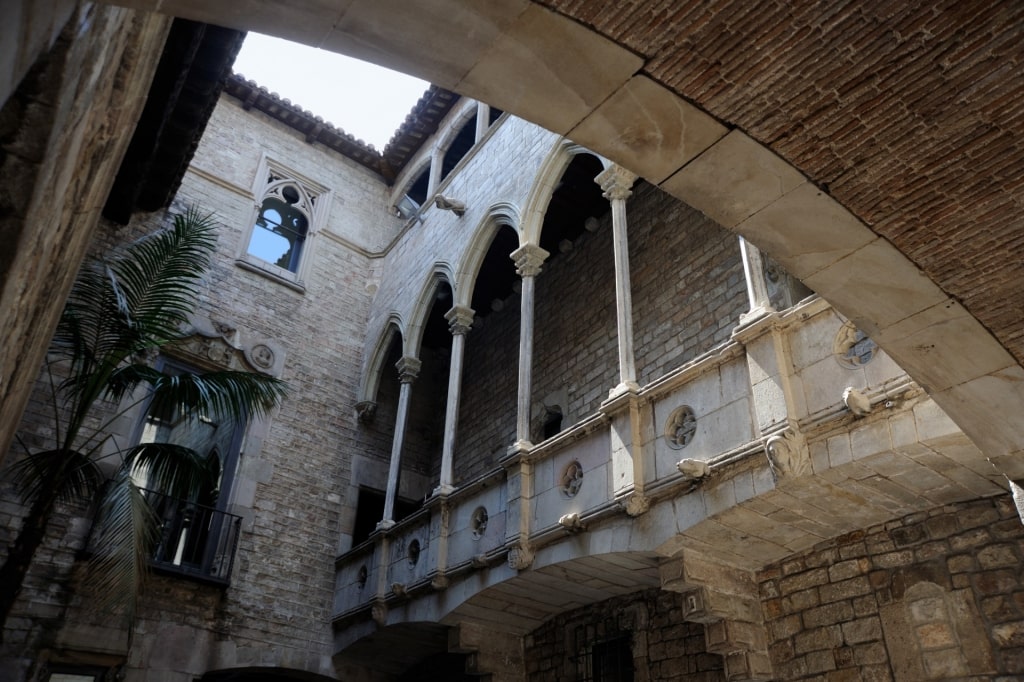
Picasso Museum, Barcelona
You could tag on a visit to the nearby Picasso Museum, also one of the best museums in Europe, or the European Museum of Modern Art, both a short walk from Moco Museum.
Casa de Colón, Gran Canaria

Casa de Colón, Gran Canaria
Casa de Colón, or Columbus House, in Gran Canaria is a mustard-hued mansion with latticed balconies in the pretty old center of Las Palmas. The museum is dedicated to Genoese explorer Christoper Columbus, who is believed to have stayed here at the start of his epic expeditions to the Americas.
The fascinating museum of 13 exhibition rooms reveals the history of the Canary Islands and the archipelago’s connection to the Americas, as well as providing insights into other explorers of the time.
Model ships, sculptures, artifacts, nautical maps, navigational instruments, and paintings are on display.
Read: Things to Do in the Canary Islands
Vivanco Wine Culture Museum, La Rioja
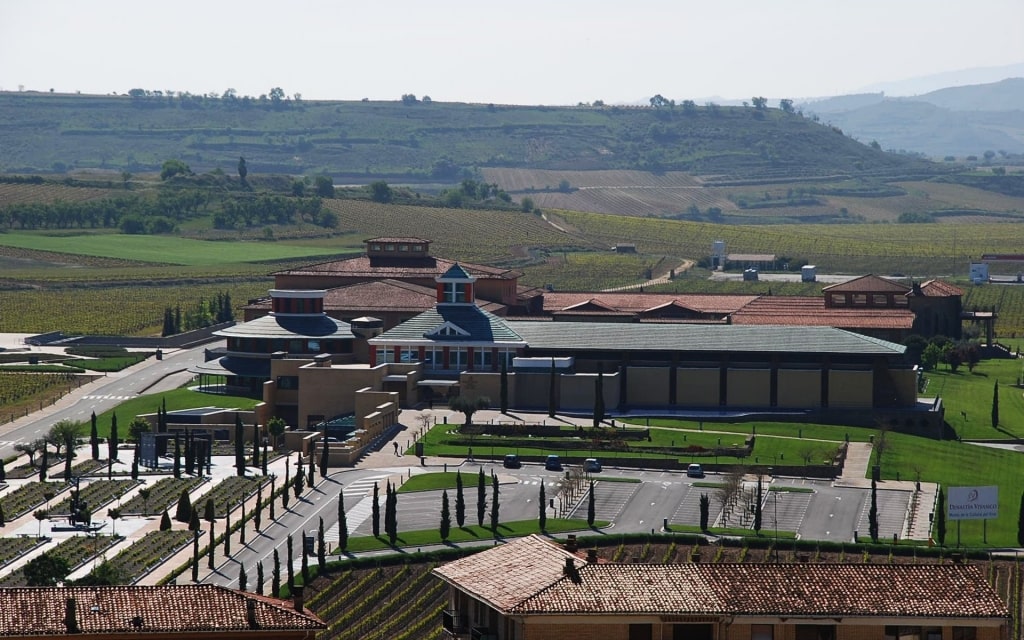
Vivanco Wine Culture Museum, La Rioja Photo by Juanje 2712 on Wikimedia Commons, licensed under CC BY-SA 2.0
La Rioja is one of Spain’s most famous wine-producing regions. The country’s cherry-red Rioja is made in the region’s rolling green hills, roughly a one-hour drive inland from Bilbao.
In the beautiful village of Briones, the Vivanco Wine Culture Museum charts the history of wine-making, focused on the La Rioja region, with a tasting room and winery tours available for visitors.
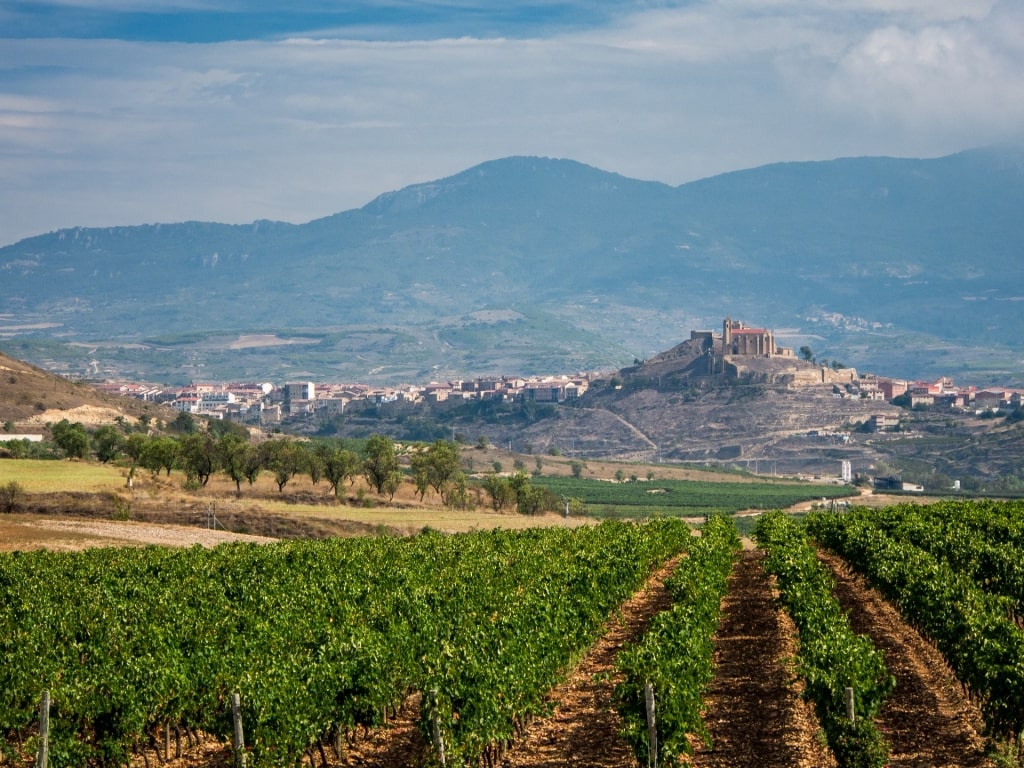
Briones, La Rioja
Before you sample some of Vivanco’s delicious wines, discover the museum’s exhibitions, featuring farming tools, antique bottles, and paintings, and wander among the 220 varieties of grapevines that lie outside.
Children can get involved, too, with educational workshops focused on the traditions of winemaking.
Museum of Cádiz, Cádiz

Museum of Cádiz, Cádiz Photo by Emilio on Flickr, licensed under CC BY-SA 2.0
Housed in an unassuming former Franciscan convent opposite Plaza de Mina, Cádiz Museum is nestled in the center of the historic city’s old town and is a fitting tribute to the oldest city in Europe; Cadiz was founded more than 3,000 years ago in Southern Spain.
Set out over three floors, the museum was created in 1970 following the merger of the Museum of Fine Arts with the Museum of Archaeology.

Museum of Cádiz, Cádiz Photo by VIATOR IMPERI on Flickr, licensed under CC BY-SA 2.0
Browse Phoenician and Roman archaeological finds, including an awe-inspiring Phoenician sarcophagus from the 5th century BC. Explore the museum’s collection of Fine Art, featuring works from the 16th to 20th centuries and the unusual Tía Norica traditional string puppets of Cadiz.
Archaeological and History Museum, A Coruña

San Antón Castle, A Coruña
Within the ancient walls of San Antón Castle in A Coruña, on the green Galicia coast, the Archaeological and History Museum focuses on preserving and exhibiting artifacts from prehistory through to more modern times.

Archaeological and History Museum, A Coruña
Conquering the three sections of the museum is a day well spent in A Coruña. Divide your time between the medieval and heraldic area, the archaeology section, and a zone dedicated to the history of the Spanish castle and the city.
Medieval sculptures, the remains of Roman graves, and Borna, a replica Iron Age boat displayed on the access ramp to the first floor, are among the highlights.
Picasso Museum, Malaga
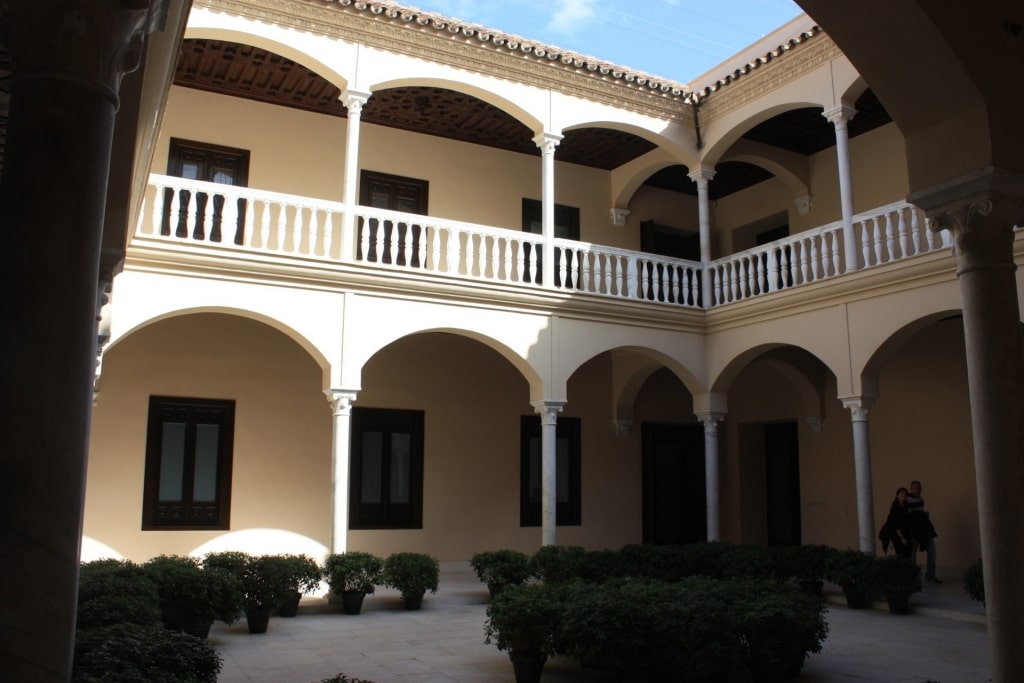
Picasso Museum, Malaga Photo by Dguendel on Wikimedia Commons, licensed under CC BY 3.0
The Picasso Museum in Malaga is one of two museums in Spain dedicated to the legendary 20th-century artist.
Housed in the beautiful 16th-century Palacio de Buenavista in the buzzing center of Malaga, you’ll find the museum located just moments from where Picasso was born at an address on Plaza de la Merced.
Gaze at Picasso’s body of work, with 233 pieces, including the outstanding “The Minotaur And Other Monsters” on display.
There’s a chic café and inviting gift shop that lures travelers to linger for longer at the Picasso Museum.
City of Arts and Sciences, Valencia
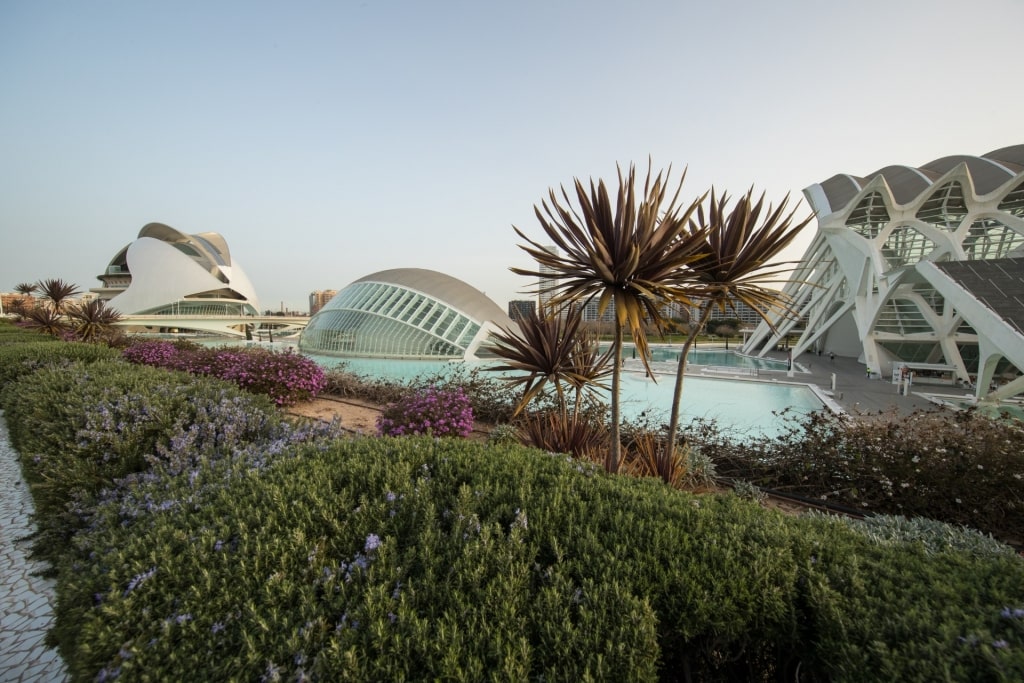
City of Arts and Sciences, Valencia
The north of Spain might have the eye-catching Guggenheim Museum Bilbao, but the Mediterranean coast has the sleek City of Arts and Sciences, which has become a symbol of Valencia.
Designed by Valencian-born architect Santiago Calatrava and Madrid-born Félix Candela (Calatrava also designed The Oculus in Manhattan, New York), the City of Arts and Sciences houses a series of museums and arts venues close to the waterfront dotted with some of Valencia’s best beaches.
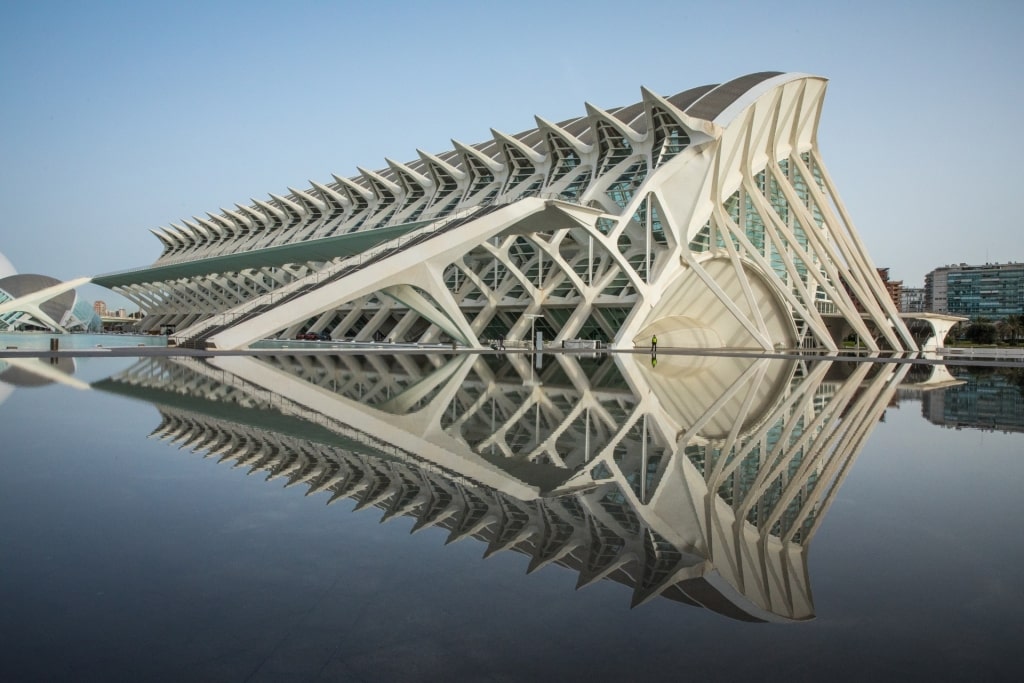
City of Arts and Sciences, Valencia
The sprawling white complex boasts a science museum, a planetarium, and Oceanogràfic, Europe’s biggest aquarium that’s home to around 500 species.
A gigantic 3D cinema, the opera and concert venue Palau de Les Arts, and large gardens with reflecting pools complete the City of Arts and Sciences.
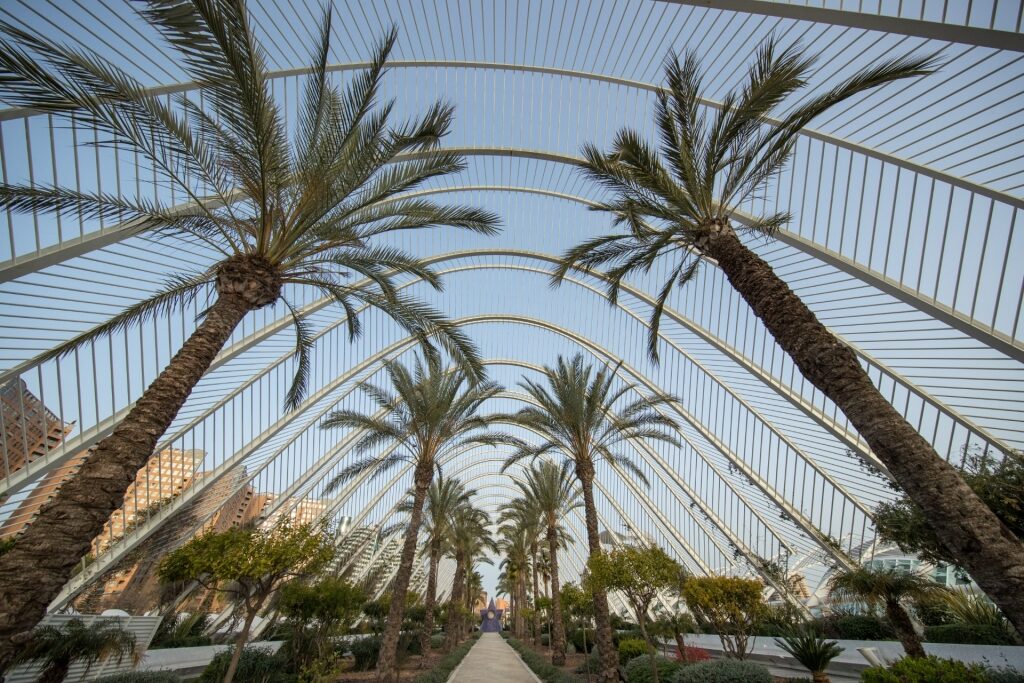
City of Arts and Sciences, Valencia
You could easily spend an entire day, or longer, at the City of Arts and Sciences, near Valencia’s Old Town. Make a plan and prioritize what you’d prefer to see and do, from exploring the Science Museum’s exhibitions to gazing up at the planetarium or taking in a movie at the futuristic IMax theater.
Read: Best Things to Do in Valencia Spain
Bilbao Fine Arts Museum, Bilbao
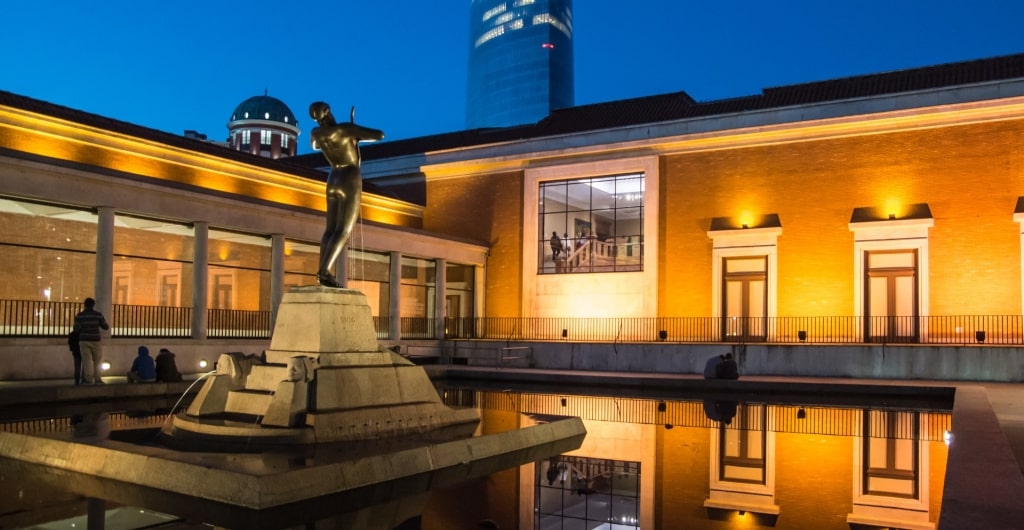
Bilbao Fine Arts Museum, Bilbao Photo by Pedro J Pacheco on Wikimedia Commons, licensed under CC BY-SA 3.0 ES
Bilbao Fine Arts Museum on Museo Plaza is considered one of the greatest museums in Spain for its rich collection of classical and contemporary masterpieces dating from the 12th century through to the present day.
The city’s original Fine Arts Museum opened in 1914. In 1945, the museum merged with the city’s Modern Art Museum to form one remarkable collection of Basque Country, Spanish, and international works.
Gaze at masterpieces by El Greco, Goya, Van Dyck, and Bellotto. There are Post-Impressionist works by Paul Gauguin, pop art by Peter Blake, and figurative paintings by Francis Bacon.
Son Marroig House Museum, Mallorca
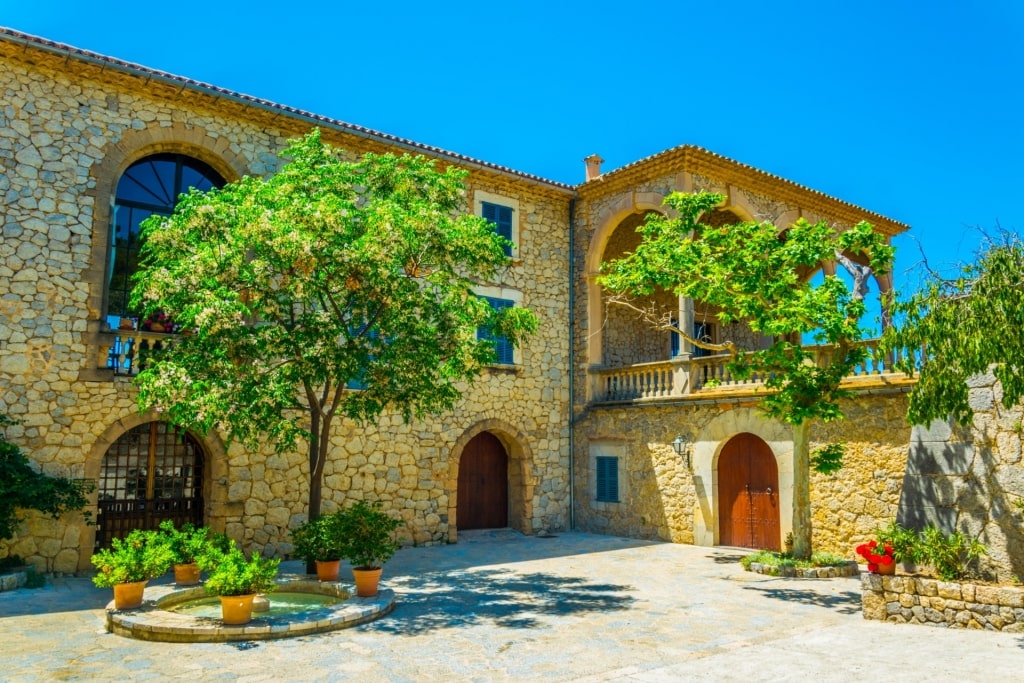
Son Marroig House Museum, Mallorca
Lying on Mallorca’s rugged north coast near Deià, Son Marroig is dedicated to Archduke Luis Salvador of Austria. The Archduke was a champion of the island’s wildlife and landscape, living on the estate in the late 19th and early 20th centuries.
Admire Son Marroig’s period furniture, antiquities, and works by artists Joaquín Mir, Joan Bauçá, and Anglada Camarasa. There’s also an enviable book collection that once belonged to the Archduke.
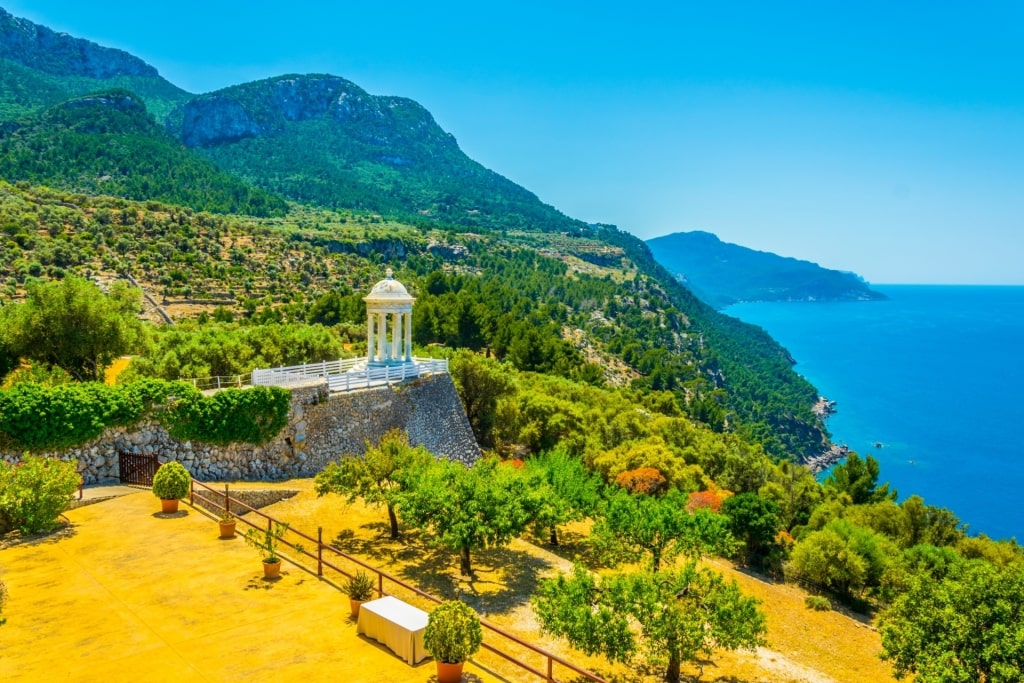
Son Marroig House Museum, Mallorca
Wander the grand terrace, with its elegant five arches framing the surrounding Sierra de la Tramuntana mountains—home to some of the best hiking in Spain—and the sparkling Mediterranean Sea. Outside, in the gardens, there’s also a Carrara marble pavilion, complete with eight columns and floral details.
The Archduke created several signposted nature paths, snaking through the green olive groves and luscious Mediterranean bush around the estate. Follow the route down to La Foradada peninsula and reward yourself with a wonderful Mediterranean feast at Sa Foradada, which specializes in local fish and colorful paella.
Museum of Fine Arts, Valencia
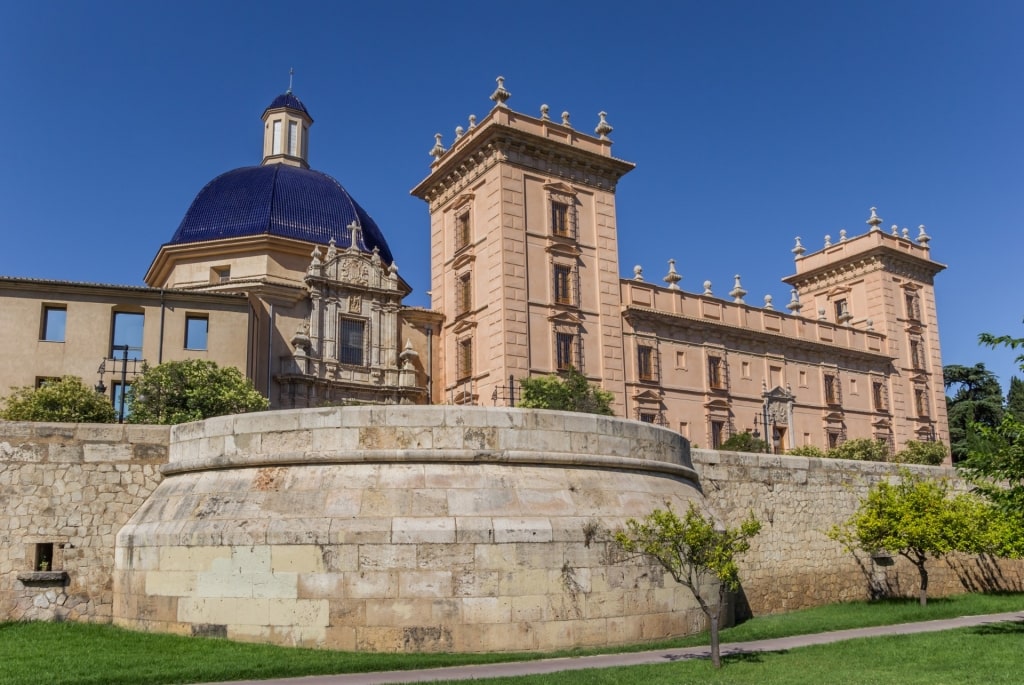
Museum of Fine Arts, Valencia
Valencia’s Museum of Fine Arts is the second largest gallery in Spain after the Prado in Madrid. Housed in a glorious, castle-like building, the museum is surrounded by tall palm trees next to the sweeping Jardines del Turia riverbed park.
A heavenly space for art lovers, the Museum of Fine Arts contains wall-to-wall works from the 15th to 19th centuries, including drawings, paintings, etchings, and sculptures.
Make the most of your visit by joining a guided tour to witness works from the Gothic, Renaissance, and Modern periods.
Around 2,000 pieces are on display, including a self-portrait by Diego Velázquez. One of the museum’s rooms is dedicated to Valencian painter Joaquín Sorolla, while another is in honor of Francisco de Goya.
Flamenco Dance Museum, Seville
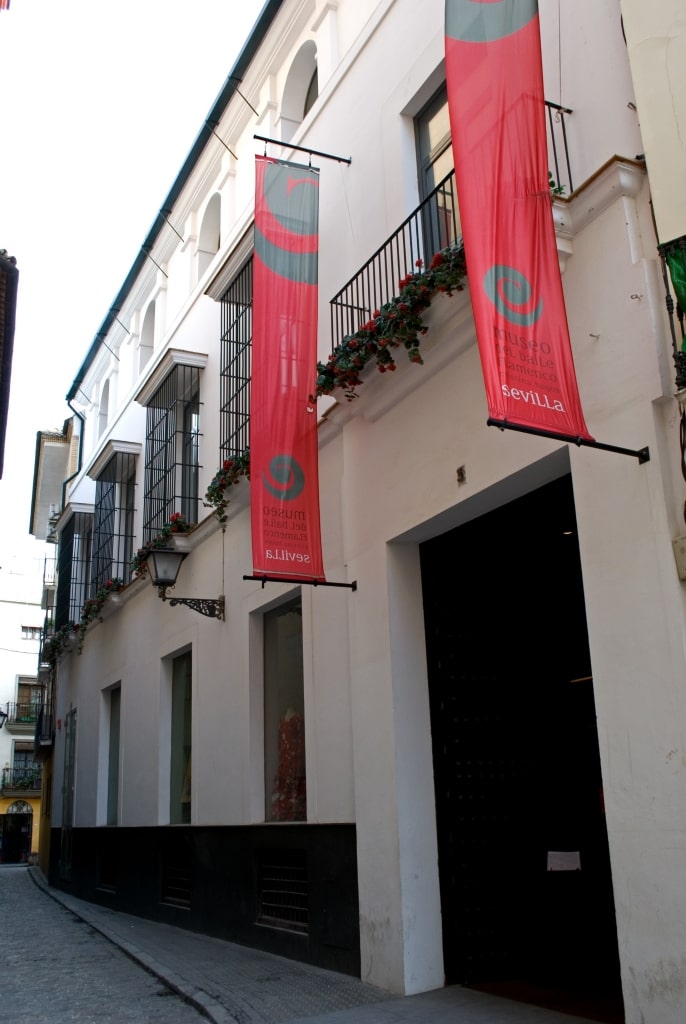
Flamenco Dance Museum, Seville Photo by Anual on Wikimedia Commons, licensed under CC BY 3.0
For a more offbeat museum in Spain, check out Seville’s Flamenco Dance Museum.
Situated within an 18th-century building in the city’s historic Jewish quarter, the Flamenco Dance Museum reveals the backstory of this sultry art form that Spain is known for.
Learn about flamenco’s origins and its place in Andalusian culture through five interactive rooms. Elaborate costumes, instruments, and paintings are displayed and there’s a choreographed flamenco performance played through large screens.
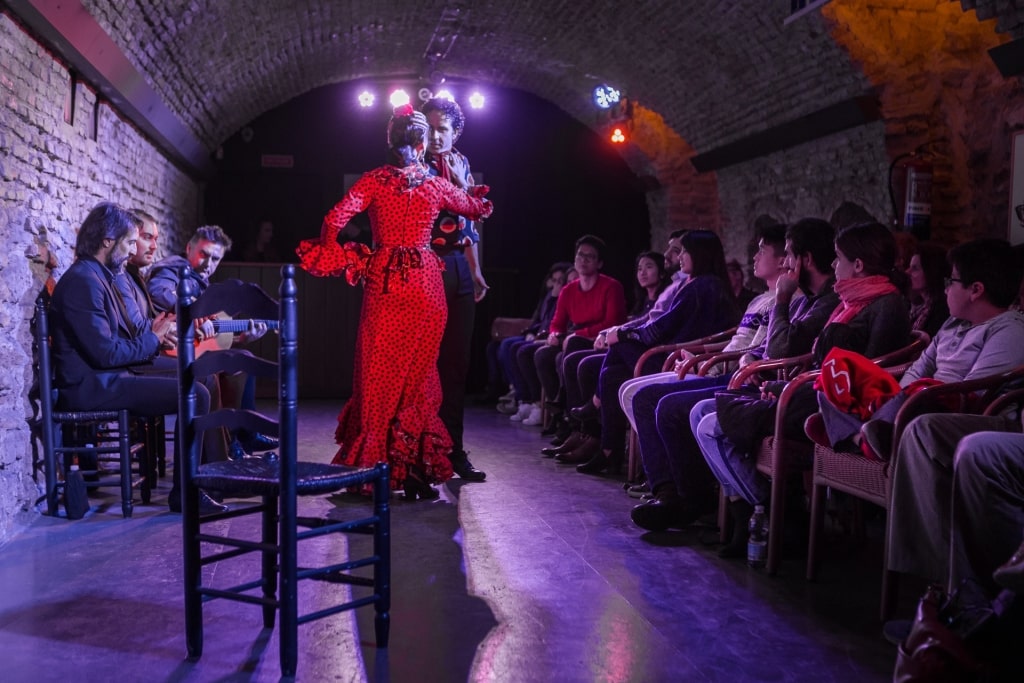
Flamenco Dance Museum, Seville Photo by Sefaradia on Wikimedia Commons, licensed under CC BY-SA 4.0
Before you leave, browse the gift shop for beautiful Andalusian crafts. Live flamenco performances also take place during the evening.
Dalí Theatre-Museum, Figueres

Dalí Theatre-Museum, Figueres
The Catalan town of Figueres is perhaps most well-known as the birthplace and resting place of celebrated Spanish surrealist Salvador Dalí.
The Dalí Theatre-Museum, dedicated to the mustached artist who is buried in a crypt below the theater’s stage, is well worth the 90-minute journey from Barcelona. Dalí designed the museum’s flamboyant spaces in what was previously the town’s theater.

Dalí Theatre-Museum, Figueres
Painted a vivid shade of pink, the Dalí Theatre-Museum is eccentric from the start, adorned with giant eggs and surrounded by tall cypress trees. One of the museum’s most prominent features, aside from the artwork, is its crowning dome and the dramatic circular internal courtyard.
The extravagant museum holds the world’s largest collection of the artist’s work, including paintings, sculptures, drawings, photography, stereoscopes, engravings, and holograms.
Walk through the museum’s rooms to marvel at the artist’s works. Highlights include “Galarina” (1944–1945); “Leda Atomica” (1949), and his last oil painting, “The Swallow’s Tail” (1983).
Visitors can also explore the works of other artists, including Catalan painters Antoni Pitxot and Evarist Vallès.
Miró Mallorca Foundation, Mallorca

Miró Mallorca Foundation, Mallorca Photo by Gunnar Klack on Wikimedia Commons, licensed under CC BY-SA 4.0
The Miró Foundation is a series of artists’ studios, workshops, and gardens in Cala Major on the outskirts of Palma that celebrates Joan Miró, another of Spain’s great 20th-century artists. The entire cultural center was bequeathed to the public by Miró himself.
Though the painter and sculptor was born in Barcelona, he was hugely influenced by Mallorca. Gain insight into Miró’s oeuvre by touring the studios where he lived and worked between 1956 and 1983.

Miró Mallorca Foundation, Mallorca Photo by Thierry Chervel on Flickr, licensed under CC BY-SA 2.0
View the artist’s bold surrealist paintings, and sketches. A common theme of Miró’s brushstrokes is splashes of red, blue, yellow, and green.
Among the buildings at the Miró Foundation is the 18th-century Son Boter with its original charcoal graffiti left by the artist. Stop by the stylish coffee shop within the pretty gardens, where 35 of Miró’s sculptures are dotted around the grounds.
Museum of Nature and Archaeology, Tenerife
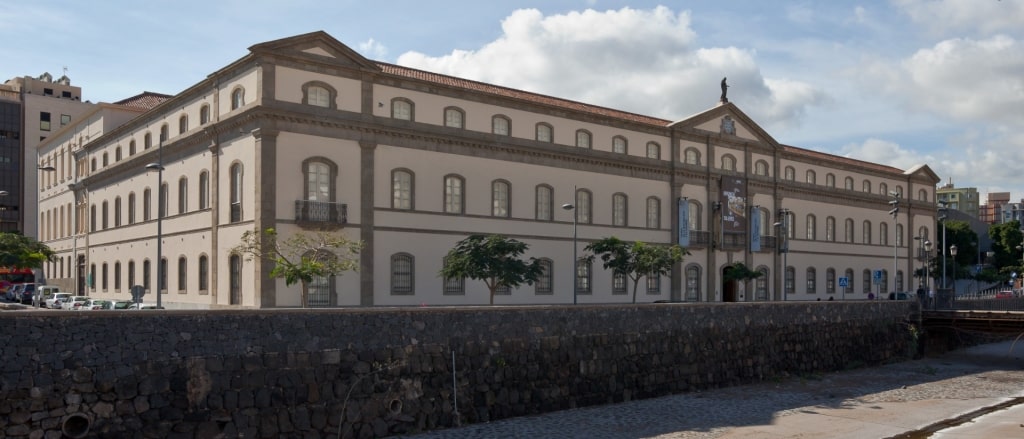
Museum of Nature and Archaeology, Tenerife Photo by Diego Delso on Wikimedia Commons, licensed under CC BY-SA 3.0
Tenerife’s Museum of Nature and Archaeology is one of the top museums in Spain for its permanent exhibition that maps the anthropology of the Canary Islands.
Located in Santa Cruz de Tenerife’s old quarter, the Museum of Nature and Archaeology also explores the famous volcanic landscapes of the Spanish islands of Lanzarote, La Palma, Gran Canaria, Fuerteventura, La Gomera, and Tenerife.
Learn about how and when the shape-shifting volcanoes were formed, and discover accounts of the Teneguía eruption, which took place on La Palma in 1971.
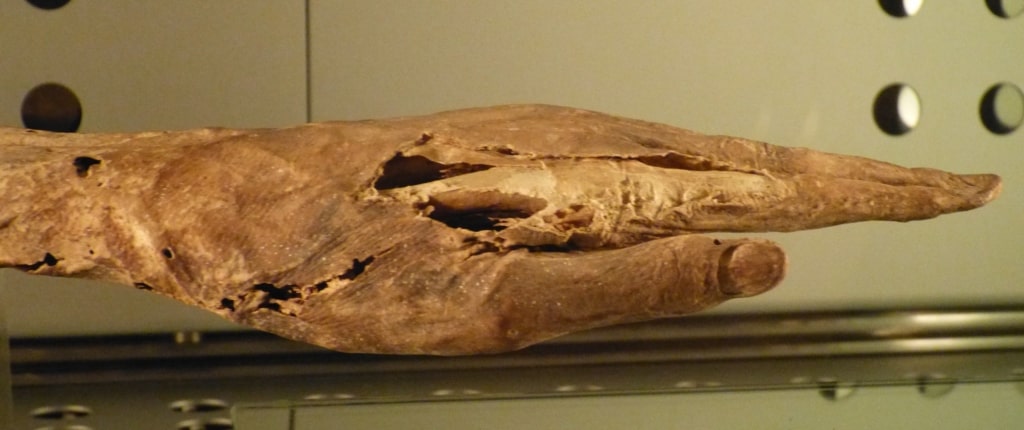
Museum of Nature and Archaeology, Tenerife Photo by Wolfgang Sauber on Wikimedia Commons, licensed under CC BY-SA 3.0
Head into the museum’s enthralling Guanches exhibition, which explores the first-known inhabitants of the Canary Islands. The museum contains an extraordinary collection of Guanche mummies preserved in a special room.
The mummies of the museum have led to experts uncovering more about the lives and culture of the Guanches, including how and where they lived, illnesses they experienced, and their funerary customs.
Read: Spain Travel Tips
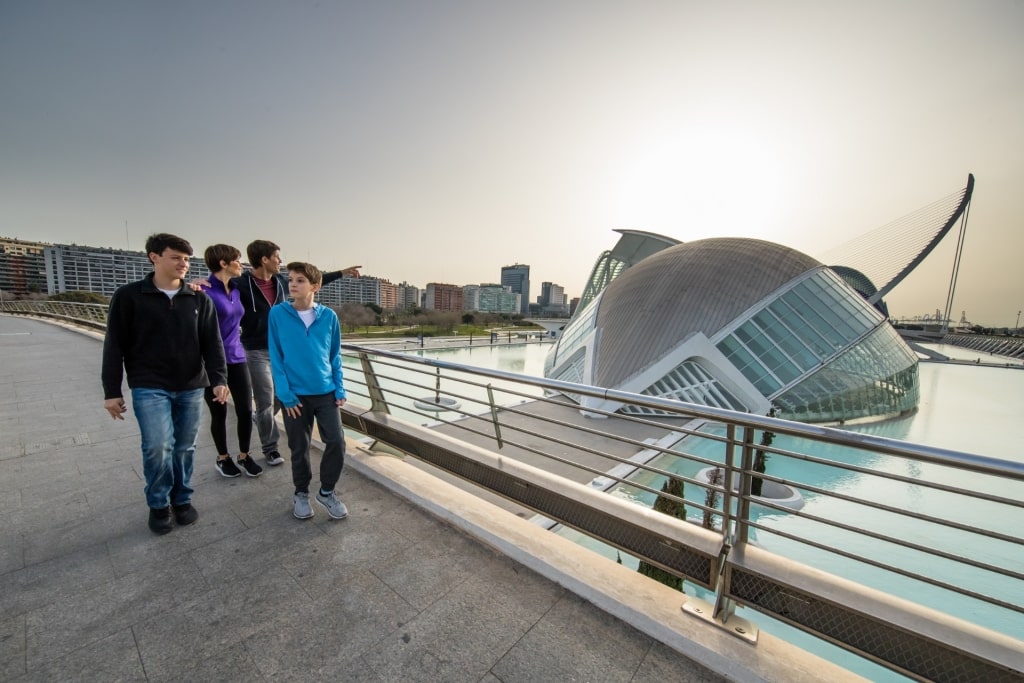
City of Arts and Sciences, Valencia
Browse Celebrity’s cruises to Spain to experience these fascinating museums and more of the country’s treasures.
